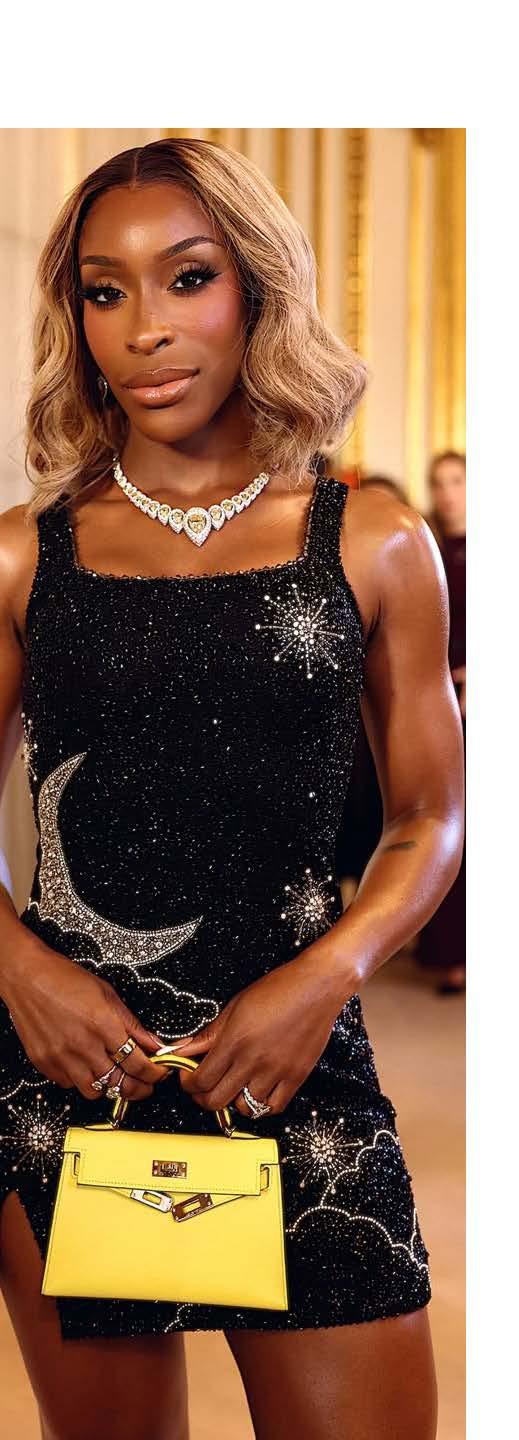
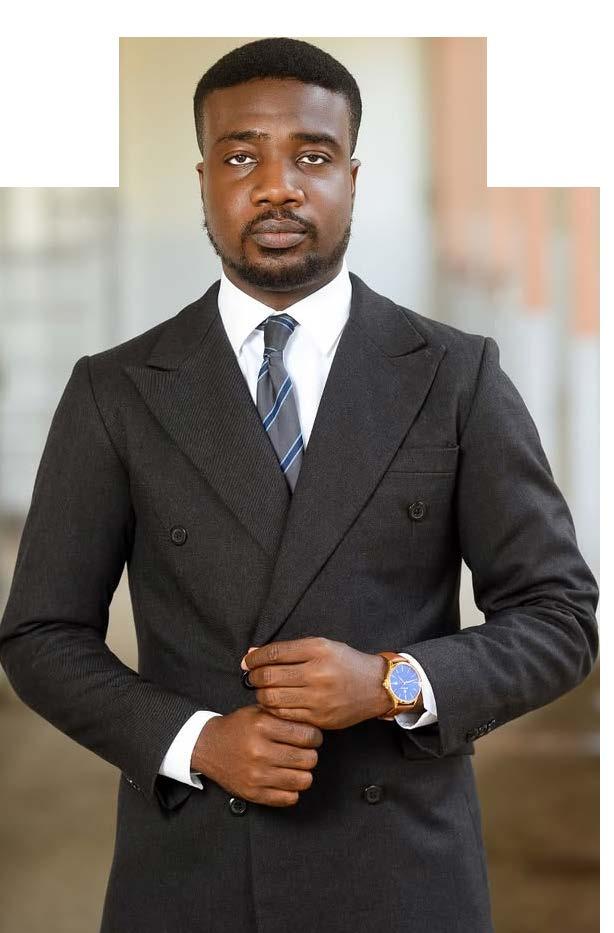





























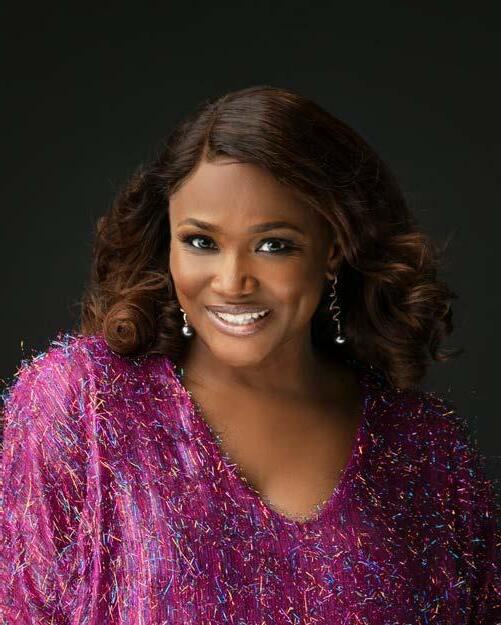
Africa’s digital renaissance feels deeply personal. Each creator is crafting a piece of a much larger narrative where Africa tells her own story. This new wave of creativity shows that the future belongs to those who dare to show up authentically. These digital creators are not waiting for access; they are building their own doors and walking through them with confidence, showing the world that Africa’s most significant export is no longer raw materials but raw talent. Every post, podcast and video adds to a growing symphony of self-expression, redefining what success looks like for a generation that values impact over approval and substance over noise. Theirs is a movement grounded in vision and sustained by community. As Africa continues to rise on the global stage, one thing is clear: the future is already here, and these digital creators are shaping it. They aren’t just influencing culture; they’re writing the blueprint for what influence itself will mean in the years to come.
Read our cover story about African digital creators on pages 8 to 10.
Shoes say a lot about a person. They aren’t just something you wear on your feet; you can tell a lot about a person’s style and personality from their shoes. Regardless of the occasion, having the right pair of shoes is important. Our fashion pages discuss the types of shoes every man should have. You’ll find this on pages 4 and 5.
One of my biggest pet peeves is saying, “ I’m five minutes away,” when you haven’t even showered or thought about what to wear. Apparently, it’s quite common for people to respond in that manner. I find it so annoying. That’s what the luxury silk page discusses this week. I would like to know your thoughts on this sort of behaviour. Scroll to page 12 for this.
Until next week, enjoy your read.


@onahluciaa + 2348033239132

AUSTYN OGANNAH
PUBLISHER/EDITOR-IN-CHIEF
Executive Editor: Onah Nwachukwu @onahluciaa
Writer: Johnson Chukwueke
Design & Layout: Olaniyan John ‘Blake’
Digital Media: Oladimeji Balogun
Consulting Art Director: Sunny Hughes ‘SunZA’



5 Types of Shoes Every Man Should Have
Untold Truths The Art of Letting Go (of what no longer serves…)
16 REVIEW DOWNTOWN CONFIDENTIAL COVER The Digital Innovators Redefining Influence The Realisation Cold Destinations That
The Ministry of “I’m On My Way”





Boluwatife Adesina @bolugramm
- Contributing Writer
Boluwatife Adesina is a media writer and the helmer of the Downtown Review page. He’s probably in a cinema near you.
Dorcas Akintoye @mila_dfa_
- Contributing Writer
Dorcas Akintoye is a dedicated writer with 5 years prolific experience in writing articles ranging from food, entertainment, fashion and beauty. She loves writing, listening to music and playing scrabble. She is a highly-skilled, enthusiastic, selfmotivated professional writer.
Sally Chiwuzie @unshakable.is.a.state.of.mind
- Contributing Writer
Sally Chiwuzie is a non-practising barrister who owns the brand #Unshakable. She is the author of Silent Symphonies, a fictional love story, and the creator of the podcast Chronicles of #Unshakable Truths.
Ada Obiajunwa @aaddaahh
- Contributing Writer
Ada Obiajunwa writes from Lagos about the big truths tucked inside ordinary moments — friendship, self-discovery, and the quiet revolutions of everyday life. She believes in the power of presence, good banter, and decoding the unsaid. Through her fragrance studio, WhiffWonders, she also crafts scents that weave memory and emotion into experiences that feel like home.
















BY DORCAS AKINTOYE
When it comes to style, a man’s shoes say a lot about him. They’re not just something you wear to cover your feet; they tell a lot about your personality, lifestyle, and sense of fashion. Whether you’re dressing up for a wedding, heading to work, or keeping things casual, having the right pair of shoes for each occasion is important. Here are five types of shoes every man should have in his wardrobe.
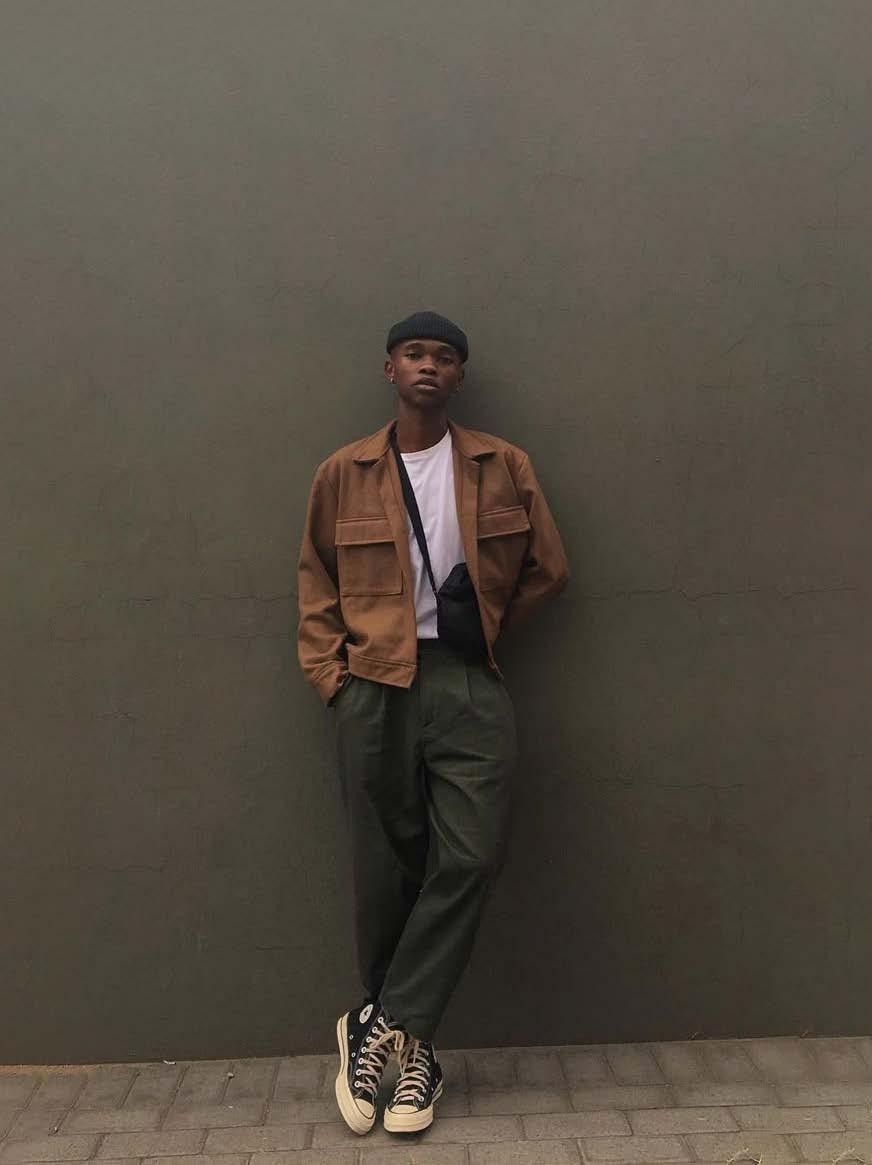

Every man needs at least one pair of Oxford shoes. These are your go-to formal shoes, perfect for job interviews, weddings, business meetings, and other important events. Oxfords are known for their closed lacing system, which gives them a neat and polished look. They pair well with suits, tuxedos, or even dressy trousers.
If there’s one shoe that combines comfort, class, and versatility, it’s loafers. Loafers are slip-ons with no laces and stress, yet they manage to look effortlessly stylish. You can wear loafers with jeans, chinos, or even native attire.

No man’s wardrobe is complete without a pair of clean white sneakers. They’re simple, modern, and go with almost everything, from jeans and shorts to tailored trousers. White sneakers add a youthful, fresh look to your outfit.
Every man should own at least one pair of boots. They’re strong, durable, and give off a masculineconfident, vibe. Boots come in different styles, such as Chelsea boots, desert boots, and work boots, and each serves its purpose. Chelsea boots are sleek and stylish, perfect for dressing up with jeans or smart casual outfits.


Sometimes, you need something easy and comfortable. That’s where sandals or slides come in. They’re perfect for relaxed days, especially during the dry season when the heat is intense. You can wear them around the house, for quick errands, or for casual outings. Go for leather sandals or goodquality slides that look stylish, not sloppy.

Building a solid shoe collection isn’t about having dozens of pairs; it’s about having the right ones. With these five essentials, you’ll be ready for almost any occasion life throws your way.

... in your best interest

SALLY CHIWUZIE @unshakable.is.a.state.of.mind

There comes a time in every woman’s life when she realises that peace has a price. And that the cost, more often than not, is access. For years, she had been an open house — heart unlocked, windows wide, every light on. She believed in connection, in generosity, in second chances. She said yes to every request, entertained every call, absorbed every story that wasn’t hers to hold. Because that’s what good people do, isn’t it? They show up. They accommodate. They forgive. Until one day, she woke up empty. It wasn’t burnout per se, it was emotional bankruptcy. Her kindness account was overdrawn. Her time, her peace, her attention was spent on others. She couldn’t hear herself
anymore. The noise of everyone else’s needs had drowned out her own.
And when she wasn’t solving other people’s problems, she was busy community-solutioning her own — taking surveys of friends, family, and strangers to decide what her next move should be. Every decision became a round-table discussion. Every revelation met with a chorus of opinions. The more she shared, the less she knew.


She realised that sometimes giving too much of herself wasn’t kindness — it was selfsabotage. Not everything needed to be up for debate. Some truths needed to stay unspoken, sacred, whispered only to God. The minute she began to keep a few things to herself, she noticed how stillness returned, how clarity bloomed when she wasn’t carrying the weight of a million voices.
She had been naked and vulnerable, completely surrounded, and yet, overwhelmingly alone. She was surrounded by noise, by people, by commentary, but missing her own anchor, her own intelligence, her own spiritual compass. It wasn’t that she regretted being open; it was that she had mistaken openness for obligation. She had confused connection with exposure. So, she stopped. No announcement, no explanation, just stillness.
She started closing the windows — not to shut the world out, but to hear the voice within, the one she
had ignored for too long - God’s whisper that said, ‘Peace isn’t found in people; it’s found in boundaries.’
She began to understand that boundaries are not barriers; they are walls with doors and windows designed to open and close at her choosing. The right people would knock, wait, and be welcomed in. The wrong ones would rattle the handle and eventually leave.
Her openness had once been her pride, her proof of strength. Now she saw it for what it was — a wound disguised as warmth. She had been afraid that saying no made her selfish, afraid that creating distance made her cold. However, the truth was simpler: she had been afraid of being misunderstood. So she allowed too many people to take up residence in her peace.
It’s funny how clarity comes quietly. There was no breakdown, no grand epiphany — just a morning like any other, sunlight slipping through the curtains, and a sudden knowing: ‘I don’t have to explain my boundaries to anyone.’
From that day, she practised graceful detachment — not as punishment, but as self-respect. She learned to love people without losing herself in them. She stopped answering calls that drained her. She stopped engaging in conversations that didn’t align with her spirit. She stopped apologising for choosing silence over noise.
She found that letting go wasn’t about cutting people off; instead, it was about releasing the grip of what no longer fit. It wasn’t about coldness; it was about calibration — adjusting the temperature of her openness to match her peace.
There is an art to letting go. It’s not angry, it’s not loud — it’s steady. It’s the slow exhale after years of holding your breath. It’s choosing truth over familiarity, discernment over guilt.
She began to see that ‘me first’ is not selfish — it’s sacred, and when you refill your own cup, you pour more cleanly into others.
Perhaps this is the #Unshakable truth: Graceful detachment is not cruelty. It’s clarity. Boundaries are not walls; they are wisdom. Letting go is not giving up; it is growing up. The woman who finally learns to walk her truth, even to the exclusion of everyone else, is not selfish. She is free.
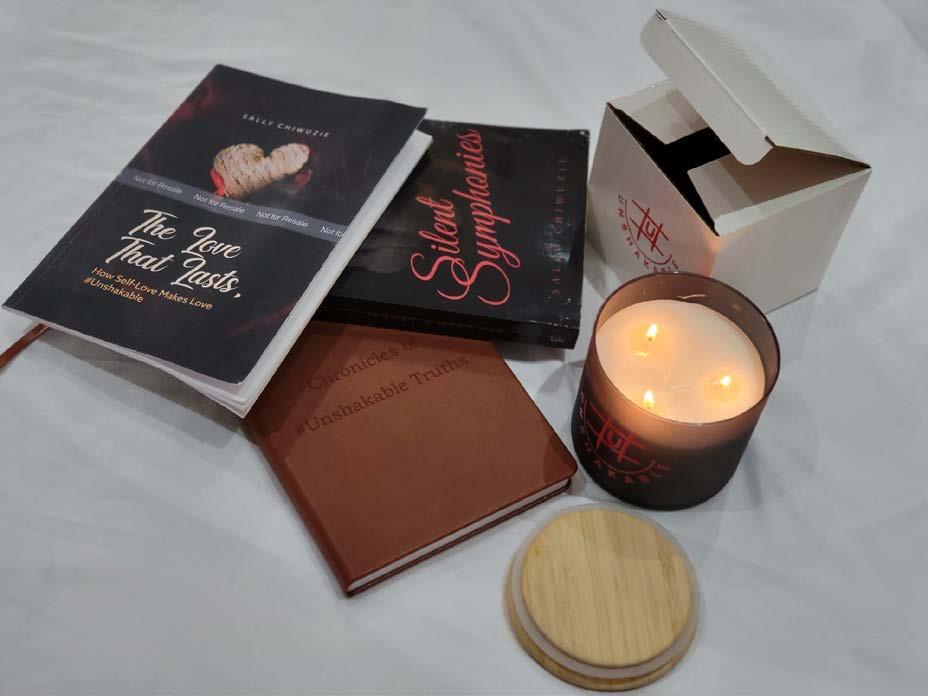
‘See’ you next week.
BY JOHNSON CHUKWUEKE
There’s a new kind of star power rising across Africa, one that doesn’t come from movie sets, record labels, or old-school fame, but from Wi-Fi connections and pure creative audacity. These are the digital visionaries rewriting what it means to be influential in the 21st century. They’re not chasing followers; they’re building communities. They’re not just going viral; they’re setting cultural currents in motion, one reel, vlog, and post at a time.
From YouTube storytellers and fashion tastemakers to travel vloggers and comedic geniuses, a generation of African creators is using technology to tell stories that feel unapologetically authentic and globally relevant. They’re turning content into careers, passion into platforms, and pixels into purpose.
What is fascinating isn’t just the scale of their influence, it’s the substance behind it. Their work reflects the continent’s rhythm: bold, creative, and impossible to ignore. What makes this wave so exciting is its energy as well: it’s raw, restless, and revolutionary energy. The digital age has given rise to a generation that no longer waits for permission to create; they just do. They’re their own producers, editors, stylists, and marketers, shaping narratives that feel fresh, fearless, and deeply African.
From Nigeria to Ghana to Kenya, South Africa to Tanzania, the continent is buzzing with creators reshaping the digital landscape. This isn’t just content creation, it’s cultural creation. It’s a reimagining of what Africa can look like, sound like, and feel like in the global conversation. These are the creators of tomorrow, and the future they’re building is as vibrant and limitless as their imagination.
This week, we look at some of the top names in the digital entrepreneurial field.
Without saying a word, Khaby Lame became one of the loudest voices in digital culture. Born in Senegal and raised in Italy, Khaby turned job loss during the pandemic into a creative revolution. His simple, wordless videos, where he humorously simplifies ridiculous “life hacks,” resonated across languages and continents. In 2022, he made history as the mostfollowed creator on TikTok, surpassing 160 million followers, proving that humour and authenticity can transcend borders. His signature shrug and expressive face became universal symbols of common sense in a noisy digital world. Beyond social media, Khaby has become a cultural icon. He’s partnered with global brands like Hugo Boss, Netflix, and Binance, walked red carpets at Cannes, and even served as a judge on major TV shows. Yet, he remains grounded, often speaking about perseverance and believing in your dreams. Khaby’s rise isn’t just a viral success story, it’s a masterclass in global connection. No words, no gimmicks, just pure human relatability.

In a digital world often saturated with filters and performances, Korty EO stands out by simply being real. The Nigerian filmmaker, YouTuber, and creative force has built her brand on authenticity, capturing raw, unfiltered stories that mirror the heart of her generation. From her YouTube series Flow with Korty to Love or Lies, she’s carved a niche as one of Africa’s most original storytellers, blending humour, emotion, and curiosity in ways that feel deeply human.
A self-taught filmmaker, Korty transitioned from graphic design and modelling to digital storytelling, where her signature style —intimate, offbeat, and boldly experimental — has earned her a cult following. She’s collaborated with global brands like YouTube and Meta, and her short films have drawn attention for their cinematic quality and emotional depth.
But beyond the lens, Korty represents something bigger: the rise of a new creative class unafraid to live on its own terms. She’s not just documenting culture, she’s shaping it, one fearless story at a time.

If wit were a weapon, Layi Wasabi would be unstoppable. The law graduate turned comedy genius has become one of Nigeria’s most captivating digital storytellers, known for his sharp satire and intelligent humour.
Trained as a lawyer at Bowen University, Layi swapped the courtroom for the camera, and the internet hasn’t stopped laughing since. His comedic sketches, which often blend intellect, absurdity, and everyday Nigerian chaos, have earned him millions of loyal fans. In 2024, he won Best Digital Content Creator at the Africa Magic Viewers’ Choice Awards and took home The Future Awards Africa Prize for Content Creation, solidifying his place among Africa’s top digital creatives. He was also featured in Meta’s Creators of Tomorrow campaign, celebrating his originality and cultural impact.
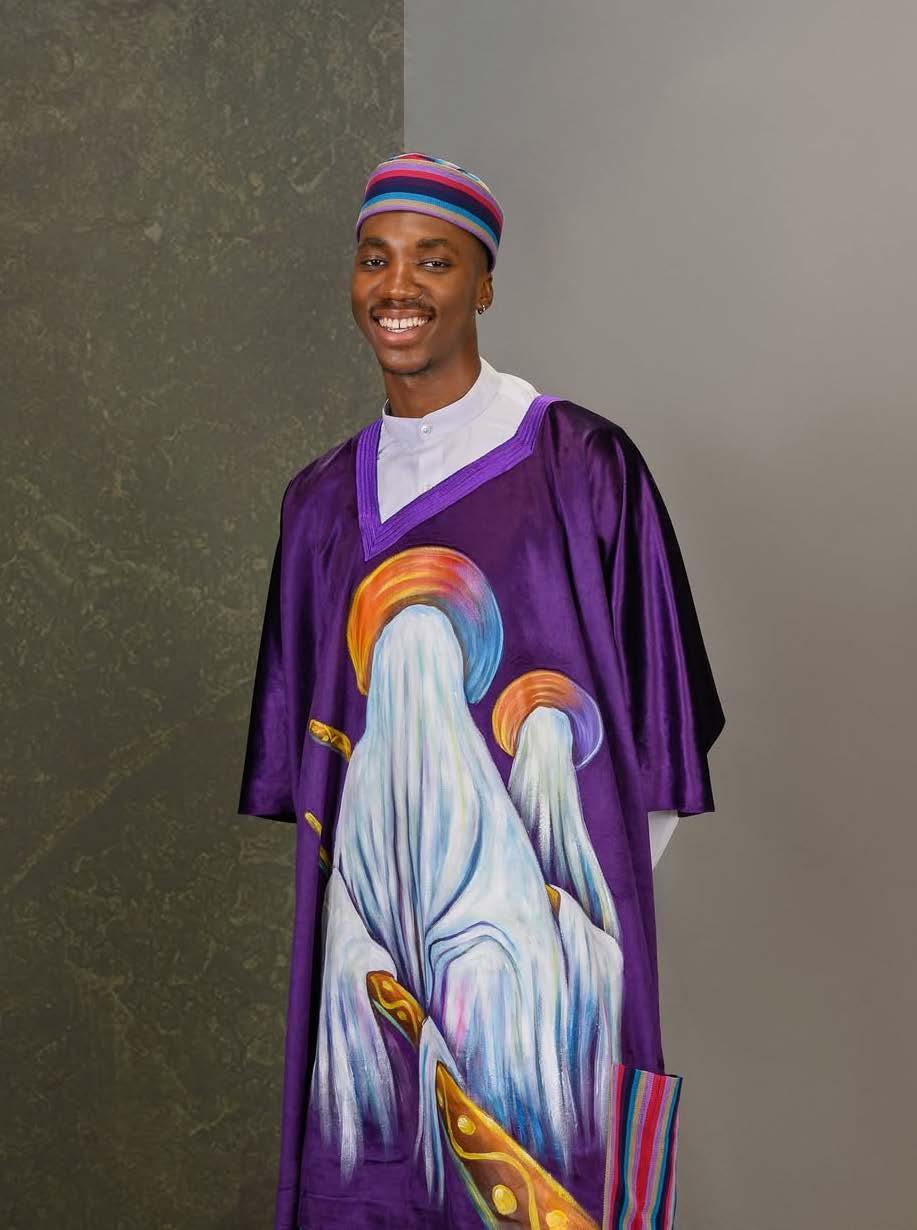
For Tayo Aina, storytelling isn’t just a career; it’s a calling. The Nigerian filmmaker, YouTuber, and travel documentarian has become one of Africa’s most compelling visual voices, transforming how the continent is seen across digital spaces. What began with a simple camera and a passion for storytelling has evolved into a platform that reaches millions worldwide. Through his YouTube channel, Tayo showcases Africa’s beauty, business potential, and human stories with cinematic flair and authenticity. His self-produced documentaries, from exploring Lagos’ creative scene to highlighting resilience in northern Nigeria, have drawn global attention and critical praise. He’s collaborated with major brands like Google, Emirates, and Tecno, proving that creativity can bridge local narratives with international relevance.
Beyond social media, Layi’s brilliance has transcended screens. His appearance at TEDxBellsTechUniversity showcased another side of him, the thinker behind the laughter. With calm confidence and deliberate wit, he explored the power of comedy to critique society and connect people. Layi Wasabi isn’t just funny, he is a storyteller who turns intellect into influence, one skit at a time.
When the world shut down in 2020, Martina Dwamena, better known as Asantewaa, opened hers to millions. What began as lighthearted TikTok videos during lockdown quickly turned into a full-blown digital empire. With her expressive humour, infectious energy, and unmistakable Ghanaian flair, Asantewaa became one of West Africa’s most beloved online personalities. Her comedic skits, often centred around everyday Ghanaian life, have amassed millions of views, earning her the title of TikTok Influencer of the Year at the Pulse Ghana Influencer Awards. Known for her consistency and charisma, she’s built strong brand partnerships and turned content creation into a thriving career, revealing that her lowest monthly income from TikTok sits at over $500.
But beyond numbers, Asantewaa’s greatest accomplishment is how she’s turned authenticity into influence. By showcasing Ghanaian humour, culture, and everyday realities, she’s inspired a new generation of African creators to embrace their roots and creativity. In a digital world craving realness, Asantewaa remains refreshingly, unapologetically herself.


Beyond the lens, Tayo is a beacon for self-made success.
Once an Uber driver, he turned his journey into a masterclass in consistency, vision, and reinvention. Today, he stands as a digital trailblazer —one frame at a time — showing that Africa’s stories deserve not just to be told, but to be celebrated.
Jackie Aina isn’t just a beauty influencer; she’s a movement. The Nigerian-American content creator has spent over a decade transforming the global beauty industry through her powerful advocacy for inclusivity and representation. From her early YouTube days in 2009, Jackie built a loyal audience by blending humour, honesty, and unmatched artistry, using her platform to spotlight the lack of diversity in major makeup brands. Her influence sparked change. Cosmetic giants like Too Faced, Fenty Beauty, and Anastasia Beverly Hills expanded their shade ranges following the conversations she helped ignite. Beyond influencing brands, Jackie built her own empire with FORVR Mood, a luxury selfcare brand celebrating rest, scent, and softness for women of colour. Named YouTuber of the Year by the NAACP Image Awards, featured in Forbes, Allure, and Vogue, and partnering with global beauty leaders, Jackie continues to prove that digital creators can drive realworld impact. Her story is one of purpose and power, a reminder that when beauty meets authenticity, change follows.

Wode Maya, born Berthold Kobby Winkler Ackon, is a Ghanaian YouTuber and digital storyteller on a mission to reshape how the world sees Africa. Trained as an aeronautical engineer in China, Maya swapped aircrafts for a camera, and in doing so, took flight in an entirely new way. His YouTube channel, WODE MAYA, inspired by the Mandarin phrase for Oh my God, has grown into one of Africa’s biggest storytelling platforms, with over a million subscribers and hundreds of millions of views.

Through his lens, he documents Africa’s entrepreneurs, innovators, and changemakers, telling stories that celebrate progress rather than poverty. His work has inspired collaborations with global brands, while his philanthropic efforts, from building schools to funding education projects, have turned digital fame into real-world impact. From the bustling streets of Accra to remote villages across the continent, Wode Maya’s voice echoes one message: Africa is rising. And through his creativity, millions are finally watching it soar.
Dimma Umeh has grown her brand to become a top name in Nigeria’s beauty and lifestyle scene, a pioneer whose quiet grace and consistency helped shape an entire generation of creators. Launching her blog in 2011 and YouTube channel in 2012, Dimma carved out a niche with her crisp visuals, soothing voice, and practical tutorials that celebrated African beauty in all its diversity. Her passion soon turned into prestige. She won Best Beauty Blog at the Nigerian Blog Awards and has since collaborated with international brands including MAC, Clinique, and Maybelline. What sets Dimma apart is her storytelling, she doesn’t just talk about makeup; she talks about life, womanhood, and the art of becoming. Her authenticity has earned her hundreds of thousands of subscribers and a fiercely loyal community that sees her as both friend and inspiration. Today, Dimma stands as a quiet revolutionary in the African digital space, a creator who built her empire not on noise but on nuance, style, and sincerity.

From the quiet streets of Botswana to the bright lights of the global internet stage, William Last KRM, born Bofelo William Molebatsi, has mastered the art of turning laughter into legacy. What started as funny home-made skits has transformed into a full-fledged entertainment career that blends comedy, music, and acting with effortless charisma. William’s expressive humour, often wordless but universally relatable, has made him a digital sensation with millions of followers across TikTok, Facebook, and YouTube. In 2023, he was crowned Digital Content Creator of the Year at the African Entertainment Awards USA, solidifying his place as one of Africa’s most influential creatives.
Beyond the jokes, William’s talent stretches into music, where songs like How It Feels showcase his soulful side and creative depth. His success is proof that global relevance doesn’t demand leaving one’s roots behind; it only takes authenticity, imagination, and a camera.
Today, William Last KRM stands as Botswana’s proudest digital export and one of Africa’s most beloved storytellers.
Edward Asare is proof that the power of digital influence goes far beyond viral trends, it can build brands, shape narratives, and create meaningful impact. A trained economist turned digital marketing professional, Edward has carved a niche for himself as one of Ghana’s most respected online voices.


Currently serving as a Digital Marketer at United Bank for Africa (UBA) Ghana, he has earned multiple accolades, including Digital Influencer of the Year (2020) at the Ghana Youth Excellence Awards and Digital Marketing Professional of the Year (2021) at the National Communications Awards. His personal blog, edwardasare. com, has consistently ranked among Ghana’s Top 50 Blogs by Avance Media from 2021 to 2023.
Beyond the trophies, Edward’s true success lies in how he uses digital storytelling to empower others, championing personal development, career growth, and brand authenticity. His journey from small-town beginnings to becoming a nationally celebrated content creator proves that with vision, consistency, and purpose, influence can indeed be a force for good.


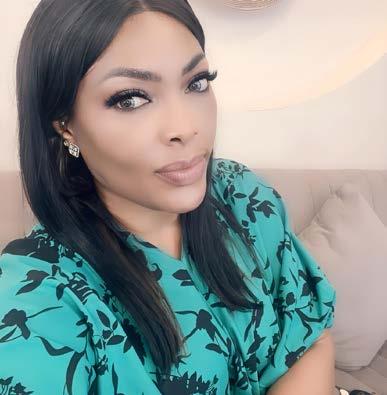
@aaddaahh

Last week, I said strength had left the group chat. Honestly, it’s still loading. Because even when strength leaves, we still find ways to show up, usually late, but still showing up.
In Nigeria, time is not a measurement. It’s a feeling. We don’t check clocks; we check vibes.
We don’t keep time; we negotiate with it.
And no matter where we are — Lagos, London, or Atlanta — our universal language remains the same: “I’m on my way.”
good intention, “I’m on my way” becomes both apology and affirmation.
But Lagos doesn’t care about your affirmations. The road has its own ministry.
By 7:30 a.m., the sun is hot, the horns are louder than your pastor, and everyone on the road believes they’re the main character in traffic.
One day, you’ll leave early and still arrive late because Third Mainland decided to hold a meeting without your consent. Another day, you’ll leave late and somehow arrive early because the God of shortcuts intervened.
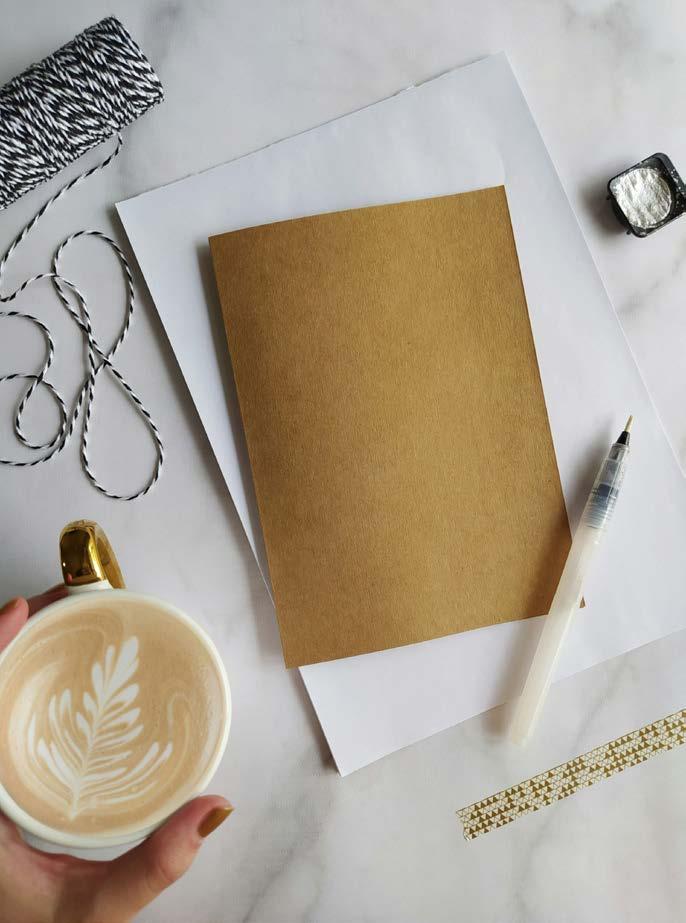
Every Nigerian knows it’s not just a phrase. It’s a lifestyle.
Part optimism, part survival, part performance art.
A promise that might take its time but will eventually arrive, fashionably late but full of heart.
You can be in your towel, still deciding what to wear, and confidently type, “I’m on my way.” Because technically, in your spirit, you’ve left the house. It’s not lying. It’s faith.
We’ve all done it. You say “I’m almost there” while still locking your door. You whisper “five minutes” when Google Maps says thirty-two. Somewhere between guilt and

Lagos na cruise. Half the time, even the person asking “Where are you?” is also stuck in traffic somewhere, calculating how to blame fuel queues when they show up two hours late. Everybody is “almost there.”
Let me tell you about one unforgettable “I’m coming” moment. It was 2011, back when people still had to show up physically at the bank. No instant transfers, no apps — just BBM, paper instructions, and vibes.
A long-time client called to ask me to help him purchase foreign exchange on his behalf. The naira was already in his account, but we needed his written instruction to debit.
He said, “Don’t worry, Ada. I’m coming. Just make sure the funds go to the person travelling to Abuja by noon.”
And because he was a trusted client, I did it.
By 6 p.m., nothing. FX dealers were pacing outside, my colleagues waiting to close. I kept texting him on BBM. His replies were calm and confident: “On my way. Almost there.”
By 9 p.m., he finally walked into the branch.
At that point, I didn’t know whether to laugh or cry — laugh because I wasn’t going to be used as suya by the BDC guys, or cry because he had actually done it. He smiled and said, “Didn’t I tell you I was coming? I came straight from Paris.”
That was the day I understood “I’m coming” in its full Nigerian dimension. He wasn’t lying. He was spiritually on his way. His body? Somewhere over the Atlantic.
After that, nothing about lateness shocked me again.
My friends already know I’m a latecomer. I wear it with my chest, so they don’t bother anymore. I’m Nigerian. It’s in my DNA. Please, don’t stress me.
The only memos I’ve ever received at work? All for lateness.
My first one came fresh out of law school, at my first job in a bank. My boss, tired of repeating herself, asked why I couldn’t get to the office before 8 a.m.
In my pure, unfiltered innocence, I asked why she was always in such a hurry to leave her house when she was the boss.
“What exactly is chasing you?” I said.
That was the day I learned honesty and wisdom don’t always clock in at the same time.
Now, when people text “Where are you?” I don’t panic.
If I’m not ready, I simply say, “Still getting myself together.”
No drama, no guilt, no lies of logistics.
Peace, I’ve learned, comes from telling the truth with humour.
Because adulthood is hard enough without pretending to be on your way when you’re still moisturising your elbows.
So yes, these days, if I say “I’m on my way,” I probably mean it in the most Nigerian way possible.

In my heart, I’ve left the house. Physically? Give me thirty minutes. Because sometimes, showing up late but honest is the only kind of strength we have left, and that’s fine.
That too, my dear, is the real Luxury Silk.
BY DORCAS AKINTOYE
When it comes to beauty, there’s one thing that always separates those who glow effortlessly from those still figuring it out: consistency. The truth is, beauty routines don’t work overnight. Whether it’s skincare, haircare, or even your diet, you have to give it time. It’s like watering a plant; you can’t pour all the water in one day and expect it to flourish immediately. The magic happens when you keep showing up for yourself daily. Here are five beauty practices that truly pay off when you stay consistent.

Beautiful skin doesn’t happen by luck; it’s built through a consistent skincare routine. Cleansing, moisturising, and using sunscreen daily may sound basic, but these steps do wonders when done regularly. Cleansing removes dirt, oil, and makeup that clog your pores. Moisturising keeps your skin soft and balanced, while sunscreen protects it from sun damage, dark spots, and premature ageing. When you stick to this routine every morning and night, you’ll notice your skin start to look clearer, smoother, and healthier. The key is not to jump from one product to another. Your skin needs time to adjust.


It might sound cliché, but water really is a beauty essential. Your skin, hair, and body depend on hydration to function properly. When you don’t drink enough water, your skin can look dull, dry, and tired. But when you make it a habit to drink water throughout the day, your body stays hydrated, and it shows on your skin. You don’t have to force yourself to drink gallons; just make sure you sip regularly, especially when you wake up, before meals, and before bed.
Exfoliation is one of the easiest ways to transform your skin, yet it’s often ignored or overdone. When done right and consistently (once or twice a week), it removes dead skin cells that make your skin look dull and rough. Over time, consistent exfoliation reveals fresher skin, helps even out your skin tone, and allows your skincare products to absorb better.



You can’t eat junk food every day and expect flawless skin; beauty truly starts from within. What you eat affects how your skin, hair, and body. When you consistently eat fruits, vegetables, whole grains, and healthy fats, your body gets the nutrients it needs to stay radiant. Consistently eating right helps your complexion look fresh and your energy stay high.
Your hair also thrives on consistency. Whether you have natural, relaxed, or treated hair, creating a steady routine makes a big difference. Regular washing, deep conditioning, and moisturising keep your scalp healthy and your strands soft and strong. But if you stick to a schedule like washing once a week, deep conditioning every two weeks, and applying oil or leave-in conditioner as needed, you’ll start to see fuller, shinier hair over time.
Consistency is the most underrated beauty secret. You can buy the most expensive skincare or hair products, but if you’re not consistent, you won’t see results. Think of your beauty routine as self-care, a daily investment in yourself. Whether it’s your skin, your hair, or your diet, keep showing up.

BY JOHNSON CHUKWUEKE

Reykjavík, Iceland — The Northern Lights’ Playground
For those who crave adventure with their hot cocoa, Iceland delivers drama. Think steaming geothermal pools, snowy lava fields, and skies that explode with the aurora borealis. Reykjavík’s festive lights against the stark winter landscape make it feel like another planet, one where magic is real.

Tallinn, Estonia — Europe’s Hidden Holiday Gem
This underrated Baltic beauty transforms into a fairytale town in December. The UNESCO-listed Old Town, covered in snow and candlelight, feels like something out of a storybook. The city’s Christmas market (one of Europe’s oldest) adds to the enchanting feeling the town gives.

Lapland, Finland — Home of Santa Claus
For the ultimate Christmas experience, head north to Lapland. Meet Santa in his official village, ride a reindeer sleigh through snowcovered forests, and sleep in a glass igloo beneath the northern lights. It’s pure holiday fantasy, and surprisingly serene.

Nuremberg, Germany — The Heart of Christmas Markets
Few places celebrate Christmas as authentically as Nuremberg. Its Christkindlesmarkt is legendary, with wooden stalls, spicy gingerbread, and the scent of glühwein in the air. If you want to experience the origins of holiday tradition, this is the place.
Without doubt, it’s a known fact that there’s something enchanting about winter travel. The crunch of snow beneath your boots, the comforting glow of fireside laughter, and the exciting holiday feeling in the atmosphere, it’s the season when the world feels like a snow globe comes to life.
As the world prepares for another season of twinkling lights and crisp air, many cities come alive with the magic of snow, song, and steaming cups of cocoa. If you’re dreaming of a white Christmas this year, these winter wonderlands promise warmth for your soul, even as your breath fogs up the frosty air.
Here’s your guide to some of the most magical destinations for an unforgettable white Christmas escape.

Bruges, Belgium — The Chocolate Capital of Christmas
Bruges is like stepping into a gingerbread village. Its medieval streets, canals, and twinkling lights make for a romantic winter escape. Add Belgian chocolate, waffles, and hot cocoa, and you’ve got comfort in every sense.
Winter travel is about rediscovering joy in the chill. So bundle up, grab a mug of something warm, and let these cities remind you that the coldest places often create the warmest memories. Because sometimes, the best way to heat up your heart is to step into the snow.

I've never told anyone this before. Not my friends —not even Chioma, who practically knows everything about me. It feels like one of those things you're supposed to keep to yourself, you know?
Admitting it out loud would make people look at me differently.
The thing is, I can't watch those films.
The ones my friends giggle about during girls' night, the ones they recommend in hushed tones with that knowing look in their eyes. I've tried. God knows I've tried. But every single time, something happens to me that I don't quite understand.
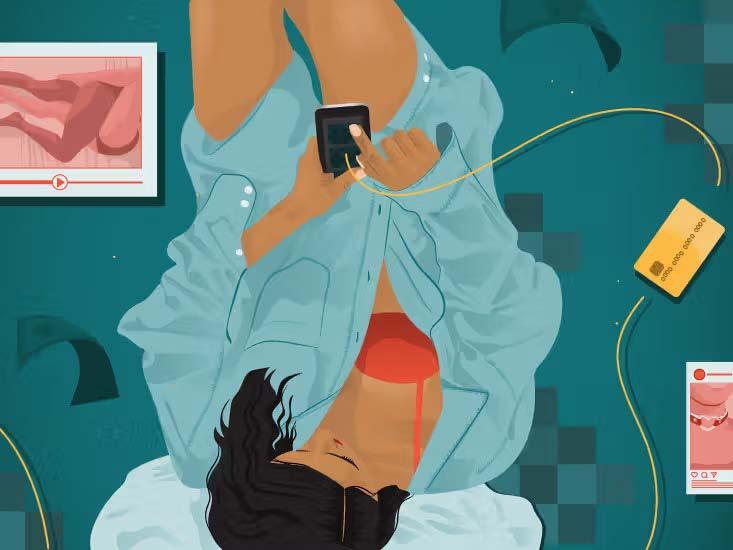

It started in my second year at university, and even now. I remember then, my roommate was watching something on her laptop, earphones in, and I caught a glimpse of the screen. She noticed me looking and laughed, asking if I wanted to watch together. I said no too quickly, and she teased me about making shakara for the rest of the week.
But it wasn't about being prudish or forming innocence. It was something else entirely.
The few times I attempted to watch, my body would react in ways I couldn't control. My heart would race. My skin would prickle with heat. And then this overwhelming sensation would wash over me, like every touch on that screen was happening to me directly, not in my imagination, but in my actual body. The male character would trail his fingers down the woman's arm, and I would feel phantom touches on my own skin. A kiss on her neck, and mine would tingle unbearably.
It was too much. Too intense. Too real.
I would sit there, frozen, my body responding to scenes playing out before me while my mind scrambled to make sense of it. The discomfort wasn't shame exactly. It was more like standing too close to a fire, the heat becoming unbearable, the need to step back becoming urgent.
I always wondered if this was normal. If other women felt this way and never mentioned it. In Nigeria, we don't really discuss these things openly. Even among friends, there's only so much you can say before it becomes "too much information." So I kept quiet, carrying this strange secret, half-convinced something was wrong with me.
I never googled it. Never tried to find answers online. Part of me was afraid of what I might discover. What if it had a name? What if it meant something clinical, something broken?
But lately, I've been thinking about it differently. Maybe there's nothing wrong with me. Maybe
I'm just someone who can't experience intimacy secondhand. Maybe my body and mind refuse to be spectators, insisting instead on being participants.
I realised I don't want to watch someone else's story. I want to live my own.
And maybe that's okay.
Maybe some of us are built for living, not observing. Maybe my body's intense reactions weren't a flaw but a compass, pointing me toward authenticity. Toward presence.
I still haven't told anyone. But now, when my friend asks why I always decline their erotic movie recommendations, I just smile and say, "It's not my thing." And she shrugs, accepting it without question. Because it truly isn't my thing.
And I'm finally learning that's perfectly fine.

Aftercountless cinematic, television, and theatrical iterations, there was no discernible need for a new Frankenstein
And yet Guillermo Del Toro more than justifies another adaptation of Mary Shelley’s 1818 classic with this gargantuan, grotesque, and grief-stricken opus.
A tortured saga of fathers and sons, hubris and humility, and enslavement and free will, the Oscar-winning filmmaker’s horror epic is as visually opulent as it is emotionally rich, a nightmare drenched in fury and sorrow. With an excellent Oscar Isaac as the fanatical doctor and an outstanding Jacob Elordi as his unholy handiwork, it’s a reimagining that’s thrillingly, monstrously alive.
Generally hewing to its source material while putting particular, heartfelt focus on the plight of its creature, Frankenstein commences with carnage, as Victor Frankenstein (Isaac) is found injured and alone in the Arctic by an expedition in search of the North Pole.
No sooner have they gotten him onto their ship (which had run aground on the ice) than the monster materialises, his face and body hidden by a tattered cloak that gives him the appearance of a marauding wraith, if not the Grim Reaper himself. Tearing through sailors whose rifles can’t stop him, the titan’s singleminded pursuit of his maker is only halted, temporarily, when he falls into the freezing water, thereby providing the mauled Victor with an opportunity to recount to Captain Anderson (Lars Mikkelsen) the origins of his present misfortune.
Following this prelude, Del Toro bifurcates his story between his two protagonists, beginning with the tormented childhood of Victor, whose surgeon father, Leopold (an always superb Charles Dance), is a cruel tyrant who schools the boy (Christian Convery) in anatomy but cannot save his wife from perishing during childbirth.
This failure provides Victor with a terrible epiphany: the sole thing that truly matters is conquering death. As an adult, he attempts to prove to his contemporaries that he’s capable of this divine feat, and though they shun him, he convinces arms merchant Henrich Harlander (Christoph Waltz) to fund his endeavour.
Strengthening this partnership, Henrich’s niece Elizabeth Lavenza (Mia Goth) is engaged to Victor’s pragmatic brother William (Felix Kammerer). Elizabeth, however, soon falls under the ambitious novice’s spell, and vice versa, muddying his efforts to reanimate a corpse stitched together from different men’s body parts. Del Toro’s production design (courtesy of Tamara Deverell) is sinister and sumptuous, and his set pieces are shot and lit with exquisite ominousness. For all its gruesome imagery and inflamed passions, Frankenstein never quite tips into outright madness; the proceedings’ restraint means that they’re less psychotic than stately. Even so, it’s a tremendously handsome film,
BY BOLUWATIFE ADESINA
and Isaac cuts a compelling figure as Victor, a zealous man whose rage and arrogance drive him to defy all conventions and cross all boundaries.
With wild hair that’s often covered by a wide-brimmed hat, his shirt partially unbuttoned, and his eyes ablaze with obsession, Isaac’s scientist has crazed swashbuckling energy, and the star captures the way in which Victor’s modern Prometheus dreams spring forth from the poison passed down from his father.
Frankenstein is wet and grimy, searing and chilling, and it becomes truly charged once the creature comes to electrified life. Del Toro has great sympathy for his spawn of the devil, whom he envisions not as a groaning blockhead but, rather, as a lean, lithe, ferocious goliath with a clay-coloured body of striking veins and patchwork divisions.
Victor is initially overwhelmed with love when the creature speaks his name and tenderly hugs him. His warmth, alas, quickly fades as the monster fails to mature as quickly as he desires; it’s not long before he’s referring to his laboratory offspring as “it” and berating and beating him for his apparent dim-wittedness.
It’s Elizabeth, delicately embodied by Goth, who helps kickstart the behemoth’s development from naïve child into conscious adult by showing him the compassion withheld by his father, who ultimately opts to erase his “mistake” by burning his creation and castle to the ground—a hellish conflagration that the creature narrowly escapes.
A feast for the senses, Frankenstein’s poignancy mounts once its attention shifts to the creature, who takes refuge in a farmhouse whose residents he covertly helps (earning him the nickname “the spirit of the forest”), and whose blind grandfather (David Bradley) treats him kindly and furthers his education by having him read the Bible and Milton’s Paradise Lost.
Elordi’s performance is the heart of this tragedy, casting the misbegotten creature as an innocent whose anguish over his abandonment begets a frightful anger that manifests itself in guttural howls and vicious violence against both men and beasts.
It’s an intensely soulful turn, equal parts menacing and melancholy, and it elevates the film’s second chapter, during which the monster, who is dead and therefore cannot die, decides that the only remedy for his loneliness is for Victor to once more play God and build him a female companion.
Diseased inheritances course through Frankenstein, and Del Toro locates beauty in blood and suffering, be it the elegant sight of Victor sawing and stitching together the creature’s appendages, or Elordi’s outcast fleeing through the misty woods as cawing crows soar by in kindred flight.
Narratively speaking, the director changes several aspects of Shelley’s original, including doing away with any mention of the creature’s fear of fire and lacing his conclusion with a dose of mercy. In his vision of this tale, Victor and the creature are corrupted by the sins of the father, and warped reflections of each other—a notion emphasised by Victor’s late loss of his leg, which renders him physically incomplete and forces him to use a prosthetic.
Still, regardless of his alterations, the auteur stays true to the novel’s fundamental outline and mournful spirit all the way to a finale in which death and life find some measure of harmony.
Like Nightmare Alley and Pinocchio, Del Toro’s Frankenstein bears his distinctive imprint but refrains from reinventing the wheel, making it less revelatory than simply robust. Nonetheless, Isaac and Elordi’s dynamic is wrought with agony and regret that’s even more compelling than the surrounding, lavish chaos and mayhem. And when it affixes its gaze upon its woeful hulk, it pulses with a passion and pain that marks it as its own beast.
Rating: 8.5/10
Available on Netflix November 7, in select Cinemas worldwide already


Scan this with your camera or click to access the playlist (Youtube Music) Scan this with your camera or click to access the playlist (Spotify)

Geeta Gandbhir’s The Perfect Neighbor can well be called by another title: The Chronicle of a Death Foretold. The remarkable documentary begins on a note of urgency with the news of a woman shot dead in a Florida neighbourhood, the despairing 911 call, and the cops rushing to the scene of the crime.
It then goes back in time to probe into what led to the coldblooded murder. Gandbhir does so ingenuously, by rigorously sifting through two years of police body cam footage and interviews of the various people involved— Susan Lorincz, called The Karen by her neighbourhood kids, the perpetrator of the crime, Ajike Owens, the dead woman, her family and children and the neighbours— and then meticulously piecing it all together into a narrative that is at once riveting, compelling and thought provoking. All this despite the fact that the entire film
has no fresh footage but only that which has been sourced from the police archives.
The roots lie in what appears to be an innocuous quarrel between the antagonistic, cantankerous lady who has problems with the children and their games. A reason why she is, in turn, actively disliked for her sociopathic ways. Talk of the irony of the film’s title, for them, she is as imperfect a neighbour as can possibly be.
However, you see things steadily get out of control over the following two-year period, and, in the light of what eventually comes to play, there is the frustration of knowing that, perhaps, it could all have been prevented by taking things seriously right at the start and through timely action. Why was the social sickness and malignancy left to fester?
The perennial conflicts and fights that the lady gets into and her constant complaints
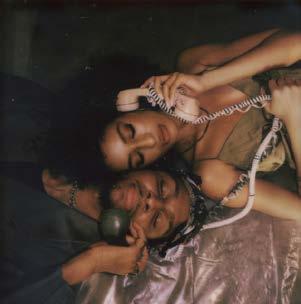


to the police feel like ticking bombs in hindsight. Her irritating ways grow steadily sinister over time, revealing intolerance and racism at its ugliest, not just in the verbal abuse she subjects her multicultural neighbourhood to (the use of the N-word, for instance), but also in sudden violent actions like ramming her truck into someone’s gate.
The harping on her right to peace and solitude borders on misanthropy, and her anger issues, combined with the easy access to guns, is indeed a recipe for disaster. The film questions all of this and more—the social and community fabric, and most so the American legal system and idea of justice. Why did it take so long to put The Karen behind bars? Would it have been the same if a person of colour had committed the crime? How can self-defence, as in “stand your ground’ laws, exonerate a mindless killing? And that eternal question—why are the gun laws so lax?
Winner of the Directing Award in the US Documentary section at Sundance Film Festival, The Perfect Neighbor is a reminder of how dangerous America can be, how cheap human lives can get and how easily they can be snuffed out. A horrifying real-life crime story that is very American but that can leave anyone anywhere in the world with a similar mix of feelings—of anger, fear and sadness stemming from a senseless and entirely avoidable act of violence.





